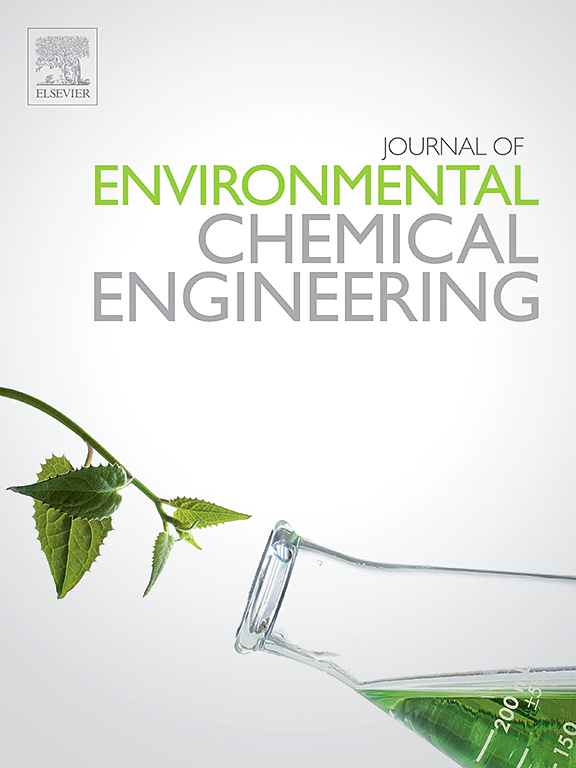基于石墨烯的阿尔茨海默病早期检测生物传感平台:进展、机制和未来方向
IF 7.4
2区 工程技术
Q1 ENGINEERING, CHEMICAL
引用次数: 0
摘要
阿尔茨海默病(AD)是最普遍的神经退行性痴呆类型,由于其进行性和缺乏可靠的早期检测方法,正在成为全球主要的健康问题。石墨烯及其衍生物具有显著的电学、力学和化学特性,近年来作为生物传感应用的有前途的材料引起了人们的兴趣。在这篇综述中,我们重点介绍了基于石墨烯的生物传感平台的最新进展,该平台设计用于早期检测AD生物标志物,如tau蛋白,淀粉样蛋白-β (Aβ)肽和相关神经递质。研究了使石墨烯能够以高灵敏度、选择性和生物相容性检测这些生物标志物的过程。我们回顾了功能化技术,电化学,光学和场效应转导类型,以及与可穿戴和微流体系统的集成。我们还讨论了开发值得信赖的即时诊断工具的未来方向,并解决了当前的问题,如传感器稳定性、真实样本验证和临床适用性。这篇综述强调了石墨烯基生物传感器在阿尔茨海默病早期检测和及时治疗方面的巨大潜力。本文章由计算机程序翻译,如有差异,请以英文原文为准。
Graphene-based biosensing platforms for early detection of Alzheimer's disease: Advances, mechanisms, and future directions
Alzheimer's disease (AD), the most prevalent type of neurodegenerative dementia, is becoming a major global health concern because of its progressive nature and the lack of reliable early detection methods. The remarkable electrical, mechanical, and chemical properties of graphene and its derivatives have drawn interest recently as promising materials for biosensing applications. In this review, we highlight the latest developments in graphene-based biosensing platforms designed for the early detection of AD biomarkers, such as tau proteins, amyloid-β (Aβ) peptides, and associated neurotransmitters. The processes that enable graphene to detect these biomarkers with high sensitivity, selectivity, and biocompatibility are investigated. We review functionalization techniques, electrochemical, optical, and field-effect transduction types, and integration with wearable and microfluidic systems. We also discuss future directions for developing trustworthy, point-of-care diagnostic tools and address current issues like sensor stability, validation with real samples, and clinical applicability. The substantial potential of graphene-based biosensors to revolutionize early AD detection and enable prompt treatment is highlighted in this review.
求助全文
通过发布文献求助,成功后即可免费获取论文全文。
去求助
来源期刊

Journal of Environmental Chemical Engineering
Environmental Science-Pollution
CiteScore
11.40
自引率
6.50%
发文量
2017
审稿时长
27 days
期刊介绍:
The Journal of Environmental Chemical Engineering (JECE) serves as a platform for the dissemination of original and innovative research focusing on the advancement of environmentally-friendly, sustainable technologies. JECE emphasizes the transition towards a carbon-neutral circular economy and a self-sufficient bio-based economy. Topics covered include soil, water, wastewater, and air decontamination; pollution monitoring, prevention, and control; advanced analytics, sensors, impact and risk assessment methodologies in environmental chemical engineering; resource recovery (water, nutrients, materials, energy); industrial ecology; valorization of waste streams; waste management (including e-waste); climate-water-energy-food nexus; novel materials for environmental, chemical, and energy applications; sustainability and environmental safety; water digitalization, water data science, and machine learning; process integration and intensification; recent developments in green chemistry for synthesis, catalysis, and energy; and original research on contaminants of emerging concern, persistent chemicals, and priority substances, including microplastics, nanoplastics, nanomaterials, micropollutants, antimicrobial resistance genes, and emerging pathogens (viruses, bacteria, parasites) of environmental significance.
 求助内容:
求助内容: 应助结果提醒方式:
应助结果提醒方式:


